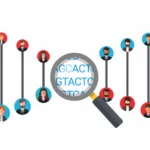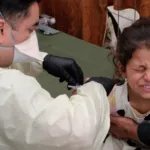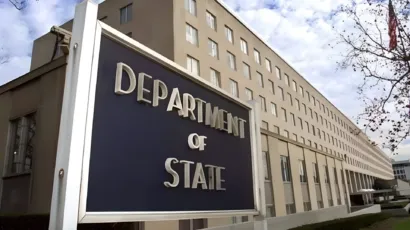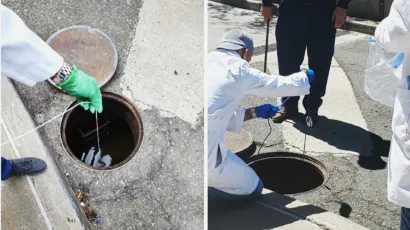CRISPR therapies can treat disease but cost millions. An equity-based approach could bring them to more people
By Kunal C. Potnis, George Goshua | October 10, 2024
 Credit: Nogas1974 CC BY-SA 4.0
Credit: Nogas1974 CC BY-SA 4.0
For some diseases, gene therapies offer the potential for lifelong disease amelioration and even cure. And these immensely important novel biotechnologies may be on the cusp of a boom. That is in part because CRISPR-Cas9, the genetic engineering technology pioneered in 2012 to great fanfare (and a Nobel Prize), promises to be a platform that will enable many new treatments.
Based on a molecular mechanism that evolved to allow bacteria to fight viral infections, CRISPR-Cas9 can efficiently target and cut out specific sequences of DNA and insert a desired gene in place of a genetic mutation. It is able to do so faster and with greater accuracy than previous methods, and with its ability to directly modify genes associated with disease, CRISPR-Cas9 is well represented in current gene editing clinical trials around the world.
But the multimillion-dollar price tag of new therapies, particularly when they are designed to treat diseases most prevalent in economically disadvantaged regions, calls into question how useful CRISPR-Cas9 therapies will ultimately prove. Increasing the affordability of CRISPR-Cas9-based gene therapies for lower-income populations will therefore be critical. In addition to technical progress and other innovations that could bring down costs, making the high price of new gene therapies justifiable may also require incorporating an often-overlooked parameter in assessing the costs and benefits of new treatments: equity.
Is gene therapy worth it? CRSIPR-Cas9 gene therapies are particularly suited for treating diseases primarily driven by a single genetic mutation, including sickle cell disease, in which patients’ red blood cells are more prone to taking a rigid, crescent moon-like (or “sickle”) shape, causing fatigue, bouts of pain, and an increased risk of infection. And while the first approved CRISPR-Cas9 gene therapy is designed to provide lifelong amelioration for sickle cell disease, it is a disease most prevalent in sub-Saharan Africa, a region that comprises low- and middle-income countries where patients are least likely to be able to afford the costly new treatment.
In 2023, UK and later US regulators approved Casgevy (exagamglogene autotemcel), the world’s first CRISPR-Cas9 gene editing therapy. The treatment is indicated for sickle cell disease and transfusion-dependent beta-thalassemia, another disease that leads to low levels of hemoglobin, a blood protein that carries oxygen.
Administering Casgevy works first by extracting a patient’s blood stem cells. The DNA within these stem cells is then edited with special enzymes to increase the amount of fetal hemoglobin produced by the patient. Finally, the edited stem cells are placed back into the patient. In the case of sickle cell disease, Casgevy eliminates the need for daily medications like hydroxyurea and drastically reduces the incidence of severe painful episodes caused by blockages in blood vessels, decreasing the need for hospitalizations and blood transfusions.
But priced at $2.2 million per treatment, Casgevy may not be affordable to many who stand to benefit from the treatment. To figure out if an intervention like Casgevy is worth it, policymakers can perform a cost-effectiveness analysis, a traditional health economic tool used to consider whether an investment is valuable at a population level.
In such an analysis, value is evaluated by an equation that calculates the differences in cost and effectiveness (e.g., life years, quality-adjusted life years, etc.) between two treatment options. The results are then ideally presented across a range of accepted societal thresholds, against which stakeholders can evaluate whether the new therapy is conventionally cost-effective. In the United States, the willingness-to-pay thresholds used by public and private policymakers range from $50,000 to $150,000 per quality-adjusted life year. When at least three independent teams examined the cost-effectiveness of gene therapy in trial-eligible patients with sickle cell disease in the United States, they all found gene therapy to be cost-ineffective by conventional standards compared to standard-of-care treatment.
Beyond cost, gene therapies require sophisticated infrastructure for preparation and administration, which can limit accessibility. At present, patients preparing to receive Casgevy first receive a medication that helps move their blood stem cells from the bone marrow to the bloodstream. A special machine separates the blood stem cells from the other components of the blood, and the blood stem cells are sent to a manufacturer for storage, where the gene modification process can take up to six months. When it is time for patients to receive their new modified blood stem cells, they must first receive conditioning therapy to make room for the new cells in their bone marrow. This conditioning therapy can have significant side effects; after patients receive their new cells two to seven days later, they must be closely monitored in the hospital for several weeks. This elaborate process entails significant investment in facilities, personnel, and licensing. Less than a dozen centers in the United States are approved to administer Casgevy, although this number is increasing.
While challenging for high-income countries, these issues are even more pronounced for low- and middle-income countries. Hydroxyurea, the mainstay treatment for sickle cell disease, is far cheaper than gene therapy, yet health care systems in low- and middle-income countries are already strained and unable to meet demand even for this therapy.
An equity approach. Performing cost-effectiveness analyses for gene therapy in low- and middle-income countries is more challenging than in places like the United States, where medical claims data, both public and private, provide a robust source for assessing standard of care utilization and costs. Moreover, while most people with sickle cell disease live in sub-Saharan Africa, where both all-age prevalence and disease-specific mortality are the highest in the world, few clinical trials have historically been available to this population, limiting generalizability of existing clinical data with which to make judgments. To properly assess the value of gene therapy in low- and-middle income countries, a new analytical lens may be necessary, one that incorporates health equity.
Health equity refers to a state where all members of a population have a fair opportunity to maximize their health. A focus on health equity can decrease barriers to health care delivery and access, improve health outcomes, and increase economic productivity for a society. A treatment that is conventionally cost-ineffective could be considered equitable by taking into account the distribution of health across an equity-relevant variable, such as socioeconomic status. Such a distributional cost-effectiveness analysis can help policymakers around the world objectively consider health equity when deciding funding priorities.
Unlike conventional methods, a distributional cost-effectiveness analysis uses mathematical calculations that focus on inequality, allowing stakeholders such as payers to explicitly weigh the tradeoff that exists between maximizing the total health for a population and the equitable distribution of health across the population, including to groups who have not traditionally benefited as much from health interventions.
In a Yale-Harvard collaboration, a team used this method for the first time to examine whether gene therapy could sufficiently reduce health disparities—in this case between individuals with and without sickle cell disease—as to make gene therapy an equitable funding investment. By this standard, the team found that gene therapy could be an equitable therapeutic strategy, and this analysis’s conclusion was then corroborated by a second independent group. Depending on the weight placed by a relevant jurisdiction on reducing any given health inequity, gene therapies could then be given adjusted priorities for funding.
The impact gene therapies will have on global health care will likely be limited without further action. First, research investment will be critical. Studies examining in vivo administration of gene therapy—that is, administering the therapy directly to the patient instead of removing and replacing red blood cells—have the potential to significantly reduce cost and infrastructure burden. Greater inclusion of patients living in low- and middle-income countries in clinical trials will also be important. In recent years, the Global Gene Therapy Initiative has worked to introduce phase 1 gene therapy clinical trials (early-stage trials) in Uganda and India, working to bridge the gap in clinical trial access that has traditionally existed in these countries.
Furthermore, greater consideration for how to fund gene therapies like Casgevy will be crucial both in the United States and around the world. Innovative payment models, such as outcome-based payments by therapeutic manufacturers linked to clinical results, can be leveraged to reduce upfront strain on payers. Precedent for outcome-based payment models exists in countries like Germany, Italy, and Spain, where rebates and staged payments have been used to pay for CAR T-cell therapy, a cancer therapy traditionally associated with high upfront cost. Public-private partnerships can also play an important role, particularly in low- and middle-income countries. Historically leveraged to execute storied public health initiatives such as polio and malaria elimination, public-private partnerships have the potential to increase funding support and catalyze infrastructure development for gene therapy.
Gene therapies have tremendous potential to alleviate suffering for patients with illnesses like sickle cell disease. While cost and access issues present challenging barriers to the current reach of these novel therapies, more inclusive clinical research, different approaches to payment, and greater understanding of value together can help maximize the promise and impact of gene therapies around the world.
Together, we make the world safer.
The Bulletin elevates expert voices above the noise. But as an independent nonprofit organization, our operations depend on the support of readers like you. Help us continue to deliver quality journalism that holds leaders accountable. Your support of our work at any level is important. In return, we promise our coverage will be understandable, influential, vigilant, solution-oriented, and fair-minded. Together we can make a difference.
Keywords: Crispr
Topics: Biosecurity

















Thank you for this insightful post on the potential of CRISPR therapies like Casgevy. It’s encouraging to see how gene editing can transform the treatment of genetic diseases like sickle cell.